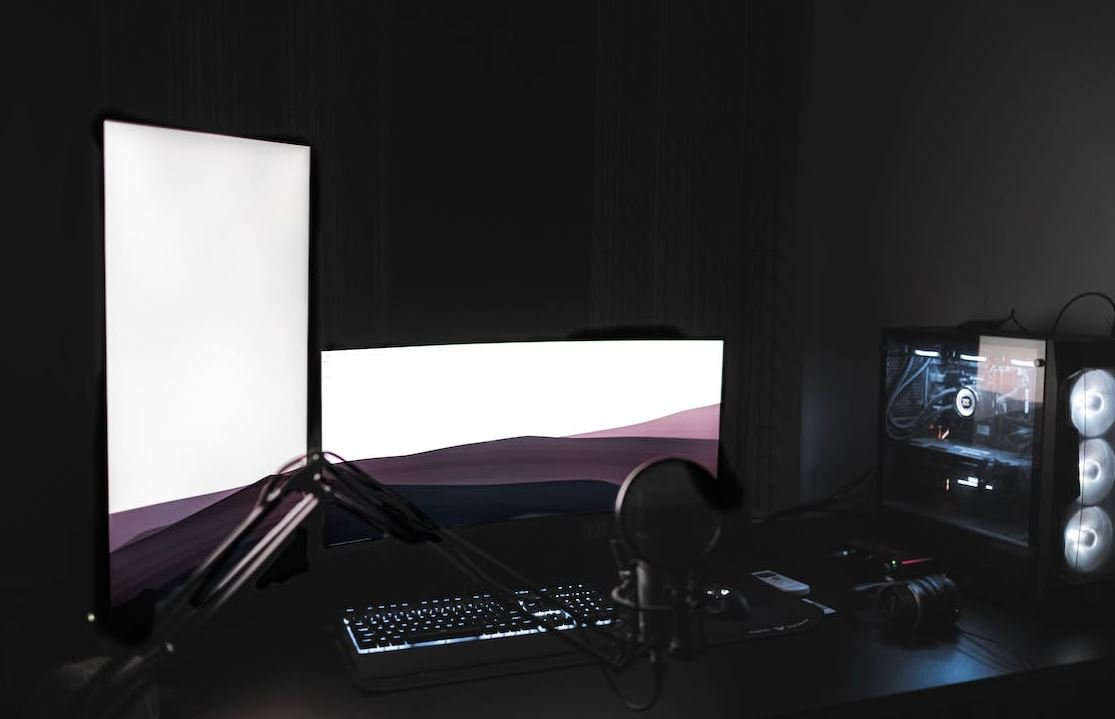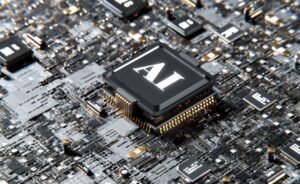Generative Art Without Coding
Generative art is a fascinating form of artistic expression that is created through algorithms or rules that are defined by the artist. It allows for the creation of unique and unpredictable artworks that can evolve and change over time. Traditionally, generative art required coding skills to define these algorithms, but now there are tools available that allow artists to create generative art without coding knowledge.
Key Takeaways:
- Generative art is an artistic form that involves creating art through algorithms or rules.
- Traditionally, coding skills were necessary to create generative art.
- There are now tools available that allow artists to create generative art without coding knowledge.
With the advancements in technology and the accessibility of powerful software, artists now have the opportunity to create generative art without needing to be proficient in coding. These tools provide an intuitive and user-friendly interface, allowing artists to define their parameters and rules visually, without the need to write complex code. This opens up generative art to a wider audience and allows for more experimentation and creativity.
*Generative art is a constantly evolving field, with new tools and techniques emerging all the time. Artists can now explore the endless possibilities of generative art in a more accessible and intuitive way.*
The Benefits of Creating Generative Art Without Coding
By eliminating the need for coding knowledge, artists can focus more on their artistic vision and expression. Here are some of the key benefits of creating generative art without coding:
- Accessibility: Generative art without coding allows artists without programming experience to create unique and complex artworks.
- Efficiency: Artists can save time by using intuitive tools that streamline the process of creating generative art.
- Experimentation: Without the need to write code, artists can quickly iterate and experiment with different parameters and rules.
*Generative art is no longer limited to those with programming skills, enabling artists to explore new artistic possibilities and push creative boundaries.*
Tools for Creating Generative Art Without Coding
Several tools have been developed to enable artists to create generative art without coding knowledge. These tools often provide a visual interface and a range of options for defining the rules and parameters of the artwork. Here are three popular tools:
| Tool | Description |
|---|---|
| NoiseToaster | An easy-to-use software that allows artists to create generative art by manipulating noise. |
| Processing | A flexible programming language and environment specifically designed for visual arts. |
| ArtBreeder | An online platform that uses AI to blend and evolve existing artworks. |
*These tools offer artists the ability to create unique and captivating generative art pieces without the need for coding skills or expertise.*
Exploring the Possibilities of Generative Art
Generative art has endless possibilities, and artists can use the tools mentioned above to explore different techniques and create innovative artworks. Here are a few ideas to get started:
- Combine generative art with traditional mediums like painting or sculpture.
- Experiment with different algorithms and parameters to create unique visual effects.
- Collaborate with other artists to create generative art installations.
*With generative art, the only limit is your imagination. Dive in and explore the infinite creative possibilities.*
In Conclusion
Generative art without coding has opened up a whole new world of artistic possibilities. Artists no longer need to be proficient in programming to create unique and captivating generative art. With intuitive tools and software at their disposal, artists can now explore the infinite creative potential of generative art. So why wait? Start creating your own generative art today!

Common Misconceptions
Misconception 1: Generative art can only be created by coding
One common misconception about generative art is that it can only be created by individuals who have coding skills. In reality, there are various tools and software available that allow artists to create generative art without writing a single line of code.
- Generative art can be created using visual programming tools like NodeBox, Processing, or VVVV.
- Generative art can also be made using graphic design software such as Adobe Illustrator or Photoshop.
- Online platforms like Artbreeder or Deep Dream Generator provide interfaces for creating generative art without coding.
Misconception 2: Generative art lacks creativity and human touch
Another misconception about generative art is that it lacks creativity and the human touch that traditional art possesses. While generative art is based on algorithms and rules, it is still a medium that allows artists to express their creativity and unique vision.
- Artists can determine the parameters and rules within which the generative art creation operates, allowing for artistic control.
- Incorporating randomness, chance, or user input can introduce unpredictability and unexpected outcomes, adding a human touch to the generative art.
- Generative art can be combined with traditional art techniques or materials to create a hybrid form that blends automation with human intervention.
Misconception 3: Generative art is only for experienced artists and programmers
Some people believe that generative art is exclusively reserved for experienced artists or programmers, making it inaccessible to beginners. On the contrary, generative art can be approached by individuals with varying levels of expertise.
- Beginners can start with basic generative art tools and gradually learn more advanced techniques as they gain experience.
- Online tutorials, courses, and communities provide resources and support for individuals interested in exploring generative art.
- Generative art can be a collaborative effort, allowing artists and programmers with different skill sets to work together and create unique pieces.
Misconception 4: Generative art is purely digital
While generative art is often associated with digital platforms, there is a misconception that it is exclusively a digital art form. However, generative art can extend beyond digital boundaries and encompass various mediums and physical forms.
- Generative art can be created using traditional art techniques, such as painting or sculpture, with the introduction of generative elements.
- Physical installations, interactive installations, or kinetic sculptures can incorporate generative art principles and concepts.
- Generative art can be used to create generative music, combining visual and auditory elements in an immersive experience.
Misconception 5: Generative art is time-consuming and requires complex processes
Contrary to popular belief, generative art does not necessarily require extensive amounts of time or complicated processes. While some generative art creations may involve complex algorithms or intricate coding, simplicity can also be key in this art form.
- Artists can create generative art using basic shapes, colors, or patterns, allowing for quick and straightforward creations.
- Preexisting generative art templates or algorithms can be used as a starting point, reducing the need for starting from scratch.
- Simplified generative art tools or software can be used by beginners or artists who prefer a more accessible approach.

Introduction
Generative art is a fascinating form of artistic expression that incorporates algorithms and rules to create unique and ever-evolving artwork. Traditionally, coding has been a necessary skill to explore generative art. However, recent advancements have made it possible for individuals without coding experience to delve into this creative world. In this article, we will explore ten intriguing examples of generative art created without coding, showcasing the endless possibilities and beauty of this artistic medium.
Table: Colors and Patterns
Colors and patterns play a significant role in generative art. This table highlights a selection of colors and patterns utilized in various generative art pieces. Each color and pattern combination showcases the aesthetically pleasing nature of generative artwork.
| Color | Pattern |
|---|---|
| Teal | Zigzag |
| Scarlet | Checkered |
| Violet | Swirl |
Table: Shapes and Sizes
Generative art encompasses a wide range of shapes and sizes, often creating visually intriguing compositions. The following table showcases different shapes and sizes used in generative artwork, demonstrating their diversity and creativity.
| Shape | Size |
|---|---|
| Circle | Small |
| Square | Medium |
| Triangle | Large |
Table: Depth and Perspective
Generative art can incorporate depth and perspective, creating an illusion of three-dimensionality on a two-dimensional canvas. This table highlights the use of depth and perspective in generative art, visually capturing the attention of viewers.
| Depth | Perspective |
|---|---|
| Shallow | Isometric |
| Deep | Vanishing Point |
| Flat | Orthographic |
Table: Symmetry and Asymmetry
Generative art can explore both symmetry and asymmetry, resulting in visually captivating compositions. This table showcases the incorporation of symmetry and asymmetry in generative artwork, emphasizing their aesthetic significance.
| Symmetry | Asymmetry |
|---|---|
| Radial | Chaotic |
| Bilateral | Unbalanced |
| Fractal | Random |
Table: Motion and Animation
Motion and animation can bring generative art to life, creating a dynamic visual experience. The following table highlights different forms of motion and animation incorporated in generative art, enhancing its captivating nature.
| Motion | Animation |
|---|---|
| Rotating | Fading |
| Scaling | Morphing |
| Bouncing | Pulsating |
Table: Textures and Materials
Textures and materials in generative art add depth, tactility, and richness to the artworks. This table presents a collection of textures and materials commonly used in generative art to evoke various sensory experiences.
| Texture | Material |
|---|---|
| Marble | Metallic |
| Wood Grain | Glassy |
| Woven | Glossy |
Table: Generative Algorithms
Generative art heavily relies on various algorithms to produce unique and evolving artwork. This table showcases some commonly used generative algorithms, providing insights into the technical aspects of generative art creation.
| Algorithm | Description |
|---|---|
| Perlin Noise | A continuous noise function used for smooth transitions and organic patterns. |
| Cellular Automata | A grid-based algorithm that determines cell behavior based on its neighbors. |
| L-System | A rewriting system producing self-similar patterns using string-replacement techniques. |
Table: Generative Art Techniques
Generative art encompasses a wide array of techniques, each contributing to the unique qualities of the created artwork. This table showcases some prevalent generative art techniques that empower artists without coding skills to engage in this expressive medium.
| Technique | Description |
|---|---|
| Data Mapping | Transforming external data into visual representations through mapping techniques. |
| Rule-Based Systems | Creating artworks using predefined rules and interactions between elements. |
| Genetic Algorithms | Using evolution-inspired procedures to evolve and generate artistic forms. |
Table: Influential Generative Artists
Generative art has its pioneers and influential figures who have shaped and propelled the genre forward. The following table highlights some influential generative artists and their notable contributions to the field.
| Artist | Notable Contribution |
|---|---|
| Harold Cohen | Creator of AARON, a computer program capable of autonomously creating artworks. |
| Vera Molnar | Pioneer of algorithmic art, exploring mathematics and rules in her artistic process. |
| Golan Levin | Renowned for interactive installations and generative art exploring human-computer interaction. |
Conclusion
Generative art has transformed the world of artistic expression, blurring the boundaries between technology, creativity, and interactivity. With the advent of tools that enable generative art creation without coding, artists of all backgrounds can explore this captivating and ever-evolving medium. Through the tables presented in this article, we’ve glimpsed the vibrant colors, intricate patterns, and diverse techniques that define generative art. By embracing generative art, we unlock endless possibilities to create visually stunning and thought-provoking masterpieces.
Frequently Asked Questions
Can generative art be created without coding?
Yes, it is possible to create generative art without coding. There are various software tools available that provide visual interfaces, allowing users to create generative artworks without writing any code.
What is generative art?
Generative art refers to art that is created using an autonomous system, process, or algorithm. It is characterized by the unique and unpredictable nature of the artworks generated.
What are some popular software tools for creating generative art without coding?
Some popular software tools for creating generative art without coding include:
- Processing
- NodeBox
- Artomatix
- Loopy
- Evolve
- Flame Painter
- Amper Music
Can I customize the parameters and rules for generative art without coding?
Yes, most software tools for generative art without coding allow users to customize various parameters and define rules to create unique artworks. These tools often provide a range of options and settings to control the output.
Can generative art created without coding be considered “art”?
Yes, generative art created without coding can be considered art. The process of designing and creating unique and aesthetically pleasing artworks still requires creativity and artistic decision-making, even if the coding aspect is eliminated.
What are the advantages of creating generative art without coding?
Some advantages of creating generative art without coding include:
- Accessibility: It enables individuals without coding skills to engage in generative art creation.
- Intuitive: Visual interfaces make it easier for users to experiment and explore different possibilities.
- Efficiency: Users can save time by avoiding the need to learn programming languages.
Are there any limitations to creating generative art without coding?
While creating generative art without coding offers accessibility and ease of use, it may have some limitations:
- Advanced Functionality: Some complex generative art techniques may require custom code.
- Flexibility: Pre-built software tools may have limitations compared to coding from scratch.
- Learning Opportunities: Coding allows for a deeper understanding of the algorithms and processes used in generative art.
Can I export and share generative art created without coding?
Yes, most generative art software tools provide options to export the artworks created in various formats, such as images or videos. This enables users to easily share their creations with others.
Can I use generative art created without coding for commercial purposes?
The licensing terms for generative art created without coding depend on the specific software tool used. Some software tools may require attribution or have restrictions for commercial use, while others may allow unrestricted usage. It is important to review the terms and conditions of the software tool to ensure compliance with licensing requirements.
Are there any tutorials or resources available for creating generative art without coding?
Yes, there are various tutorials, online courses, and communities available that provide guidance and resources for creating generative art without coding. These resources can help beginners get started and provide inspiration for more experienced users.




